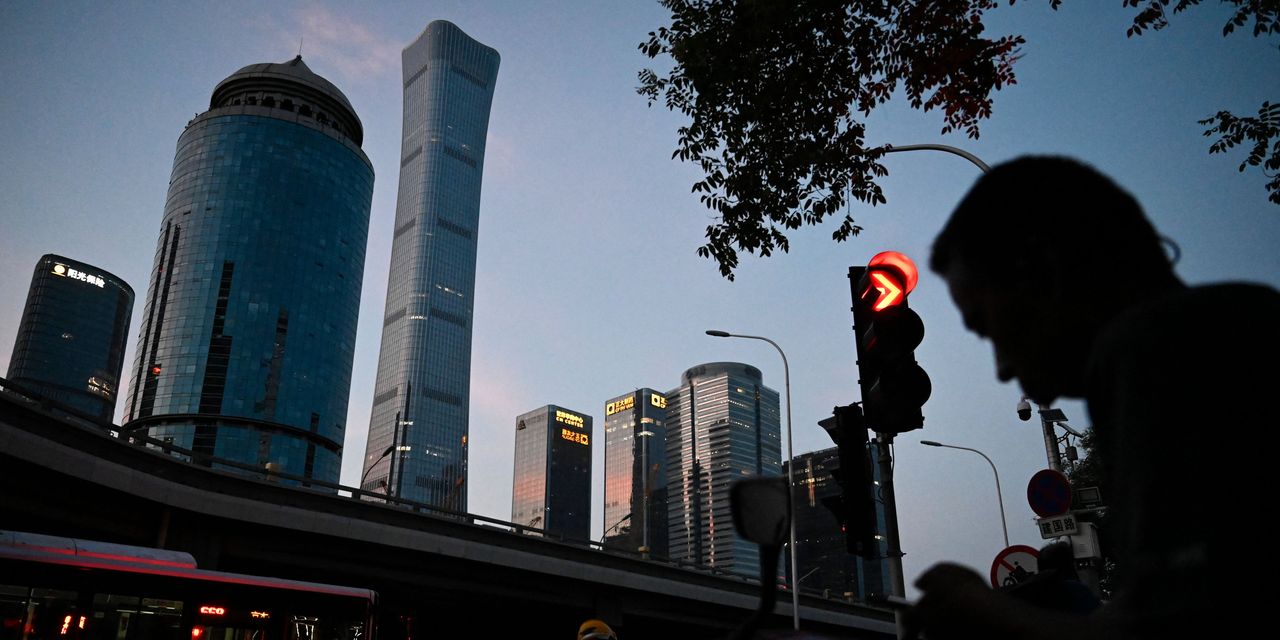China is one of the largest buyers of the world’s biggest commodities, and the slowdown in its economy isn’t great news for markets.
There are concerns about its economic turmoil spilling over to the rest of the world as the country’s Covid recovery sputters, property market falters, and policy makers hesitate to unleash a wave of stimulus.
But commodities markets aren’t falling apart as badly as the dour outlook would suggest. The
Invesco DB Commodity Index Tracking Fund
(ticker: DBC) is down less than 3% over the past month, compared with the 8% decline of the
iShares MSCI China ETF
(MCHI).
“If the Chinese economy were experiencing a meltdown, you would expect commodity prices to be soft,” writes Gavekal Reseach’s Louis Gave in a note this week. “We are seeing the opposite. The CRB index has had a strong year so far in 2023 and is trading above its 200-day moving average. Moreover, the 200-day moving average now has a positive slope.”
The relative resilience of metals and energy markets is one of the bigger disconnects. Indeed, demand for industrial metals appears to be much better than what would be expected given the slump in China’s property market.
Marcus Garvey, head of commodities strategy at Macquarie in Singapore, sees two reasons. Construction activity isn’t down to the same degree as data about property developers would suggest, with year-to date declines in the mid- to high-single digits to low teens. And China has put through infrastructure spending that has boosted building in the renewables sector, Garvey tells Barron’s.
Fixed asset investments have not been strong year to date, with the private sector contributing next to nothing in terms of growth. But the public sector has been spending, with utility expenditures up 30% and solar doubling from year-ago levels, Garvey says.
The energy transition could be tempering some of the hit to commodities such as copper, which is off highs but still relatively resilient given the growing concerns about China’s economy.
“It has clearly deteriorated but it’s more of a grind. Demand hasn’t fallen off a cliff,” Garvey says. One potential support is that construction is going toward properties not for commercial sale, including companies building housing for workers and local governments directly building schools and hospitals, that may not show up in the developer-oriented data.
But Garvey is still cautious, especially because markets don’t seem as worried as they were in 2015-2016 when investors were positioned for more downside as the property sector struggled.
“This time the market is relatively sanguine,” Garvey says. But leading indicators that would suggest improvement—such as a reacceleration in credit growth or money supply—aren’t moving in the right direction and instead are deteriorating.
Since the global financial crisis, China hasn’t been able to sustain an upswing in construction without stimulus. But economists don’t see stimulus as likely since the country is still dealing with debt created during the crisis. That, along with a shrinking population, puts it on a path toward far slower growth, which could mean further declines for commodities such as iron ore and aluminum.
With construction weak in Europe and manufacturing in the U.S. sluggish, Garvey says copper prices would be weaker if there wasn’t a structural boost from the broader energy transition and electrification happening around the world. Between 2000 and 2019, China accounted for all global demand growth for copper. But going forward, Garvey sees a more even split between China and the rest of the world.
In the near-term though, Garvey doesn’t see the commodities, including industrial metals, hitting a bottom until China changes its policy stance and the Federal Reserve and its developed market peers shift to a more expansionary monetary policy.
The outlook for oil is even cloudier. China, the world’s biggest importer, built up inventories earlier in the year when prices were cheap. Energy prices are also being impacted by Russia’s war in Ukraine and production cuts by Saudi Arabia and Russia.
In the second quarter, China’s net imports of crude oil and petroleum products averaged about 12 million barrels of crude a day, a level Gavekal’s China strategist Thomas Gatley describes as robust despite the weakening economy.
But oil data is becoming harder to access in China. The head of the country’s National Energy Administration recently called for less transparency in the sector, making it harder to assess how much of the imports are feeding consumer demand and how much are just a buildup of inventories, Gatley writes in a recent client note.
If China’s economy continues to struggle without a major rethink in policy, commodities are likely in for more volatility. But metals critical to energy transition such as copper and aluminum could hold up better, or at least lead a recovery, Garvey says.
Write to Reshma Kapadia at [email protected]
Read the full article here





